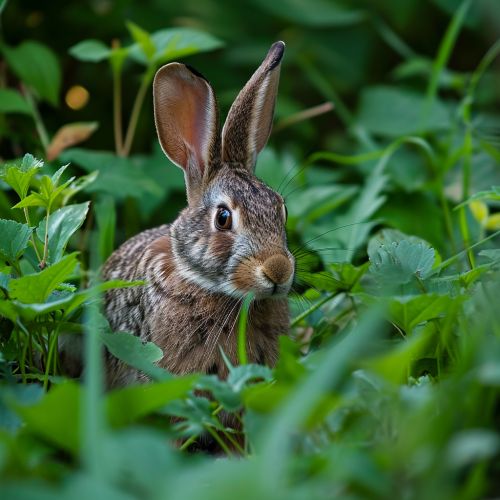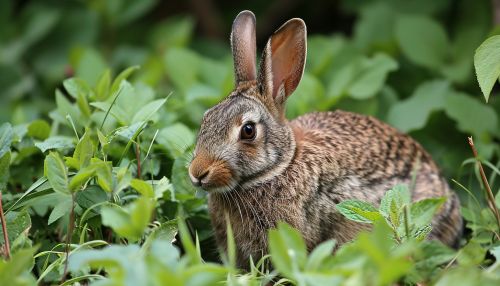Rabbits
Taxonomy and Evolution
Rabbits belong to the family Leporidae, along with the hares and the pika. The family Leporidae is part of the order Lagomorpha, which also includes the family Ochotonidae. The order Lagomorpha is characterized by the presence of four incisors in the upper jaw, a feature unique to this order.
The evolution of rabbits began around 40 million years ago in the Eocene epoch. The oldest known rabbit-like mammal, Amphilagus tomidai, was discovered in Kazakhstan and dates back to the Miocene epoch. This early rabbit-like mammal is believed to have evolved from a group of rodents known as anagalids.


Anatomy and Physiology
Rabbits have a compact and lightweight body, which is designed for speed and agility. They have long hind legs and short forelimbs, which allow them to move quickly and jump great distances. The hind legs are also used for digging burrows, a behavior known as fossoriality.
The rabbit's skull is characterized by the presence of large orbits and a short rostrum. The brain is relatively small and the olfactory bulbs are well developed, reflecting the importance of smell in rabbit behavior. The dental formula of rabbits is 2/1, 0/0, 3/2, 3/3, with the second pair of upper incisors being small and located directly behind the first pair.
Rabbits have a unique digestive system, characterized by a process known as cecotrophy. This involves the consumption of soft fecal pellets, which are produced in the cecum and contain partially digested food. This allows rabbits to extract additional nutrients from their diet.
Behavior
Rabbits are primarily crepuscular, being most active during dawn and dusk. They are also known to be active during the night, a behavior known as nocturnality. During the day, rabbits typically rest in a burrow or a form, a shallow depression in the ground.
Rabbits communicate using a variety of signals, including postures, vocalizations, and chemical signals. They are also known to thump their hind legs on the ground as a warning signal.
Rabbits are social animals and live in groups known as colonies. The social structure of a rabbit colony is hierarchical, with a dominant male and female at the top.
Reproduction
Rabbits have a high reproductive rate, a characteristic known as r-selection. The gestation period is short, ranging from 28 to 36 days, and the litter size is large, with up to 14 kits being born at once. The young are altricial, being born blind and hairless.
The reproductive cycle of rabbits is influenced by photoperiod, with breeding typically occurring in the spring and summer. However, in domesticated rabbits and in some wild populations, breeding can occur year-round.
Domestication and Uses
Rabbits have been domesticated for thousands of years and are used for a variety of purposes, including meat production, fur production, and as pets. The process of domestication has led to the development of a wide range of rabbit breeds, each with its own unique characteristics.
Rabbits are also used in scientific research, particularly in the fields of genetics, physiology, and pathology. The rabbit has been a valuable model organism in the study of various diseases and in the development of vaccines.
Conservation
Many species of rabbits are threatened with extinction due to habitat loss, disease, and overhunting. Conservation efforts are focused on habitat preservation, captive breeding, and the control of invasive species.
The International Union for Conservation of Nature (IUCN) lists several rabbit species as endangered, including the Amami rabbit, the Sumatran striped rabbit, and the volcano rabbit.
